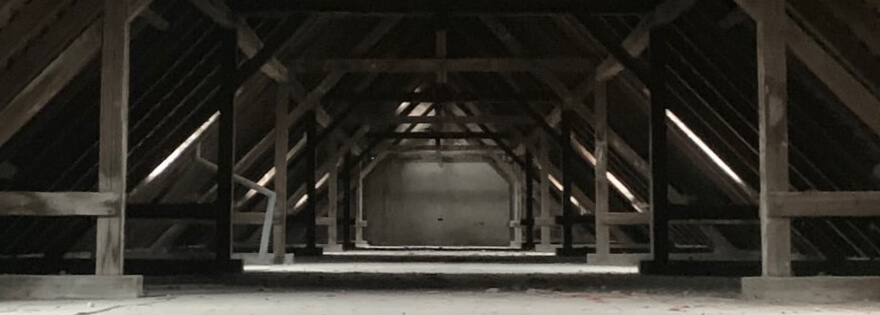How to Get Rid of Mice in the Attic
By: EarthKind
You’ve seen the signs of mice or rats in your attic. Maybe you’ve spotted mouse droppings in a corner, chewed electrical wire, or even a nest made of soft materials from your home. You know they’re there. You just can’t reach them! So what do you do now?
We go over how these critters get up into that part of a house and what to do once you’ve figured out they are there.
How Did They Get In?
So how do mice get in the attic in the first place? Rodents are amazing little creatures. They can run fast and far; they can swim, jump, and climb; they have a highly developed sense of smell; they can breed at an astonishing rate.
Mice are able to fit through openings as small as a pencil eraser! When they fit through the tiniest of openings into an area you can’t reach, and start breeding like…well, like mice, this can quickly turn into a full infestation.
You can’t just let mice and roof rats be, try as you may. Ignoring the odd squeaking, scurrying, and scratching sounds; cleaning up germ-ridden feces that can carry hantavirus and salmonella; cursing every time you find something that has been chewed up or gnawed on. Having these pests in your home can not only cause damage but can also be dangerous.
Keep your home pest free with simple, effective solutions. Subscribe and save!
Best Way to Get Rid of Rodents in the Attic
Rodent control is a must. When a mouse problem has pushed you to your wit’s end, natural rodent repellent swoops in to save the day! Here at EarthKind, we’ve been able to help homeowners get rid of mice from all sorts of enclosed spaces by turning one of the rodents’ amazing abilities, their sense of smell, against them,
Fresh Cab® and Stay Away® Rodent are plant-based repellent pouches that produce a fresh, woodsy scent that people enjoy but rodents hate. Place pouches in your attic and other areas around your home, even inaccessible areas, to send rodents running. The only challenge occurs when it is time to remove old pouches and replace them with new ones – if you just throw the pouch into a hard-to-reach area, how do you get it out?
Naturally, we’ve found a solution to this little conundrum. Watch the video below for a simple fix that will set you on the path to rodent freedom, and let us know if you have any other problems or solutions for the rodent-challenged population.
Easy, right? Just tie a long string to it and throw it where you need it. When it’s time to change out your pouches, pull the string to retrieve the pouch and replace it with a new one!
Methods We Do Not Recommend
Homeowners often try many different methods when it comes to pest control, but there are some options that we do not recommend.
- You don’t want a pest control company to toss poison around your attic all willy-nilly and hope that it works, and you certainly don’t want it to work, only to have the critters turn off and die in an inaccessible space where it will stink and decay indefinitely.
- DIY repellents can sometimes be effective but are a pain to change out, especially in hard-to-reach places, since they only last a few days at a time.
- Setting up snap traps or glue traps is often undesirable and may not even be feasible depending on where the rodents have taken up residence. It’s also not a fun job to clean these traps (and can even be risky due to the amount of contact required to empty and clean).
Once you get your pest problem under control, make sure to take additional steps to mouse-proof your home from future infestations. For example, remove nesting materials and seal easy access entry points and small holes in your attic space with caulk and/or steel wool (mice and rats can’t chew through steel). If there are other entryways, such as holes in drywall, patch those too.
This might be an easy DIY project for many people, but we urge you to use caution when cleaning and patching since droppings and nests can carry dangerous disease. We recommend following the CDC guidelines for cleaning up after these pests, or hiring a pest management professional for this part of the mouse control process.








